-
 Bitcoin
Bitcoin $116400
-0.36% -
 Ethereum
Ethereum $4033
3.40% -
 XRP
XRP $3.302
-1.26% -
 Tether USDt
Tether USDt $1.000
-0.02% -
 BNB
BNB $796.1
1.67% -
 Solana
Solana $177.8
1.89% -
 USDC
USDC $0.9999
0.00% -
 Dogecoin
Dogecoin $0.2314
4.09% -
 TRON
TRON $0.3381
0.14% -
 Cardano
Cardano $0.7989
1.22% -
 Stellar
Stellar $0.4496
-1.84% -
 Chainlink
Chainlink $20.42
9.42% -
 Hyperliquid
Hyperliquid $41.17
0.88% -
 Sui
Sui $3.914
3.77% -
 Bitcoin Cash
Bitcoin Cash $584.7
1.52% -
 Hedera
Hedera $0.2632
-0.54% -
 Avalanche
Avalanche $24.09
3.40% -
 Ethena USDe
Ethena USDe $1.001
-0.02% -
 Litecoin
Litecoin $123.2
1.33% -
 Toncoin
Toncoin $3.318
-0.04% -
 UNUS SED LEO
UNUS SED LEO $8.984
-0.05% -
 Shiba Inu
Shiba Inu $0.00001323
2.85% -
 Uniswap
Uniswap $10.90
4.41% -
 Polkadot
Polkadot $3.999
3.34% -
 Dai
Dai $1.000
0.01% -
 Cronos
Cronos $0.1630
9.64% -
 Bitget Token
Bitget Token $4.484
0.82% -
 Monero
Monero $272.4
2.44% -
 Pepe
Pepe $0.00001173
6.03% -
 Aave
Aave $290.8
2.88%
How does WMA perform in intraday trading? Is it suitable for a few minutes?
WMA's sensitivity to recent price changes makes it useful for intraday trading, but its noise sensitivity requires careful use in very short-term trades.
Jun 03, 2025 at 01:28 am
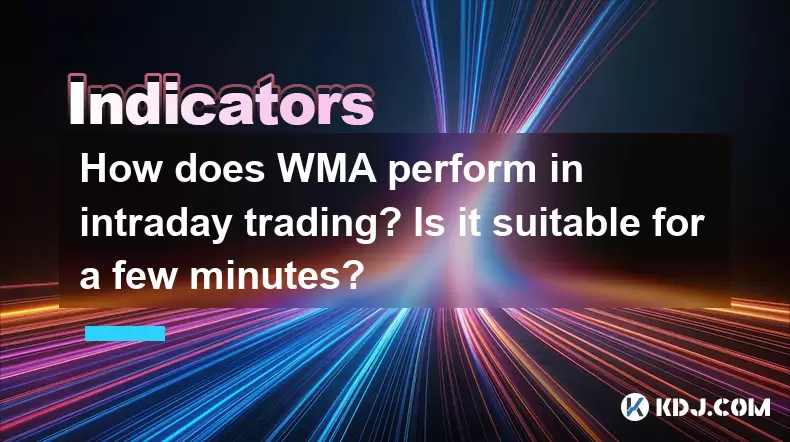
How does WMA perform in intraday trading? Is it suitable for a few minutes?
Intraday trading, also known as day trading, involves buying and selling cryptocurrencies within the same trading day. Traders often use various technical indicators to make informed decisions, and one such indicator is the Weighted Moving Average (WMA). This article delves into how WMA performs in intraday trading and whether it is suitable for short-term trading within a few minutes.
Understanding Weighted Moving Average (WMA)
The Weighted Moving Average (WMA) is a type of moving average that assigns more weight to recent price data. Unlike the Simple Moving Average (SMA), which gives equal weight to all data points, WMA emphasizes more recent prices, making it more responsive to new information. The formula for calculating WMA is as follows:
[ \text{WMA} = \frac{\sum_{i=1}^{n} (P_i \times wi)}{\sum{i=1}^{n} w_i} ]
Where ( P_i ) is the price at period ( i ), and ( w_i ) is the weight assigned to the price at period ( i ). The weights are typically assigned linearly, with the most recent price having the highest weight.
WMA in Intraday Trading
In intraday trading, the responsiveness of WMA to recent price changes makes it a valuable tool for traders. When used in conjunction with other indicators, WMA can help traders identify potential entry and exit points within a trading day. Here’s how WMA can be applied in intraday trading:
- Trend Identification: WMA can help traders identify the direction of the trend. A rising WMA indicates an uptrend, while a falling WMA suggests a downtrend.
- Crossover Signals: Traders often use the crossover of a short-term WMA with a longer-term WMA to generate buy or sell signals. For instance, a buy signal might be generated when a short-term WMA crosses above a longer-term WMA.
- Support and Resistance: WMA can also act as dynamic support or resistance levels. Traders can use these levels to make trading decisions, such as entering a trade when the price bounces off the WMA.
Suitability for Short-Term Trading
When it comes to trading within a few minutes, the suitability of WMA depends on several factors. The primary advantage of WMA in short-term trading is its sensitivity to recent price movements. This sensitivity can be beneficial for traders looking to capitalize on quick price fluctuations. However, there are also challenges to consider:
- Noise Sensitivity: Short-term WMA can be highly sensitive to market noise, leading to false signals. Traders need to be cautious and use additional confirmation tools.
- Frequency of Signals: The more sensitive the WMA, the more frequent the signals. This can be overwhelming for traders and may lead to overtrading.
- Risk Management: Short-term trading with WMA requires robust risk management strategies to mitigate potential losses from false signals.
Practical Application of WMA in Intraday Trading
To apply WMA effectively in intraday trading, traders can follow these steps:
- Select the Appropriate Time Frame: Choose a time frame that aligns with your trading strategy. For intraday trading, common time frames include 1-minute, 5-minute, or 15-minute charts.
- Determine the WMA Periods: Select the periods for the short-term and long-term WMAs. Common choices are a 9-period WMA for the short-term and a 21-period WMA for the long-term.
- Monitor Crossovers: Watch for crossovers between the short-term and long-term WMAs. A bullish crossover (short-term WMA crossing above the long-term WMA) may signal a buying opportunity, while a bearish crossover (short-term WMA crossing below the long-term WMA) may indicate a selling opportunity.
- Confirm with Other Indicators: Use additional indicators such as the Relative Strength Index (RSI) or the Moving Average Convergence Divergence (MACD) to confirm WMA signals.
- Execute Trades: Enter and exit trades based on the signals generated by the WMA and confirmed by other indicators. Always use stop-loss orders to manage risk.
WMA in Very Short-Term Trading (Few Minutes)
For trading within a few minutes, the WMA can be highly sensitive. Here’s how to approach this:
- Use Very Short-Term WMAs: For very short-term trading, consider using even shorter WMA periods, such as a 3-period or 5-period WMA.
- Monitor Price Action Closely: Given the high sensitivity, closely monitor price action around the WMA to avoid false signals.
- Set Tight Stop-Losses: Due to the potential for quick reversals, set tight stop-losses to limit potential losses.
- Combine with Other Indicators: Use other indicators like the Stochastic Oscillator to confirm WMA signals and reduce the likelihood of false signals.
Real-World Example of WMA in Intraday Trading
To illustrate how WMA can be used in intraday trading, consider the following example:
- Scenario: A trader is monitoring a 5-minute chart of Bitcoin (BTC).
- WMA Settings: The trader uses a 9-period WMA and a 21-period WMA.
- Observation: The 9-period WMA crosses above the 21-period WMA, indicating a potential bullish trend.
- Confirmation: The trader checks the RSI, which shows the market is not overbought.
- Action: The trader enters a long position on BTC, setting a stop-loss just below the recent low.
- Outcome: The price of BTC rises, and the trader exits the position when the 9-period WMA crosses back below the 21-period WMA, securing a profit.
Potential Challenges and Considerations
While WMA can be a useful tool in intraday trading, traders should be aware of the following challenges:
- Volatility: Cryptocurrencies are known for their high volatility, which can lead to false signals and whipsaws.
- Overtrading: The frequent signals generated by short-term WMAs can lead to overtrading, increasing transaction costs and potential losses.
- Confirmation: Relying solely on WMA without confirming signals from other indicators can be risky.
Frequently Asked Questions
Q1: Can WMA be used effectively in all market conditions?
A1: WMA can be effective in trending markets but may generate more false signals in ranging or choppy markets. Traders should use additional tools to confirm WMA signals and adjust their strategies based on market conditions.
Q2: How does WMA compare to other moving averages like EMA and SMA?
A2: WMA is more responsive to recent price changes than SMA but less so than EMA. EMA gives the most weight to the most recent price, while WMA assigns weights linearly. The choice between them depends on the trader's preference for sensitivity and responsiveness.
Q3: Is WMA suitable for automated trading systems?
A3: WMA can be incorporated into automated trading systems, but traders should be cautious of over-optimization and ensure that the system includes robust risk management and confirmation mechanisms to handle market volatility.
Q4: How can traders mitigate the risks associated with using WMA in intraday trading?
A4: Traders can mitigate risks by using stop-loss orders, confirming WMA signals with other indicators, adjusting WMA periods based on market conditions, and maintaining disciplined risk management practices.
Disclaimer:info@kdj.com
The information provided is not trading advice. kdj.com does not assume any responsibility for any investments made based on the information provided in this article. Cryptocurrencies are highly volatile and it is highly recommended that you invest with caution after thorough research!
If you believe that the content used on this website infringes your copyright, please contact us immediately (info@kdj.com) and we will delete it promptly.
- SHIB Price, Meme Coin Mania, and the 250x Potential Hunt
- 2025-08-09 16:30:13
- SOL, ETFs, and AI: Crypto's Triple Threat Sensation!
- 2025-08-09 17:10:12
- Tokenized Stock on Solana: SOL Price Reacts to Exodus's Bold Move
- 2025-08-09 17:10:12
- Cardano, Mutuum Finance, Millionaires 2025: A New Wave of Crypto Fortunes?
- 2025-08-09 17:50:12
- Meme Coins on Blockchains in 2025: Hype or the Future?
- 2025-08-09 16:50:11
- World Liberty Financial, Public Listing, and WLFI Tokens: A New York Minute on the Trump-Backed Crypto Venture
- 2025-08-09 16:50:11
Related knowledge

What does it mean when the Triple Moving Average (TRIX) turns downward but the price doesn't fall?
Aug 09,2025 at 12:42pm
Understanding the Triple Moving Average (TRIX) IndicatorThe Triple Moving Average, commonly known as TRIX, is a momentum oscillator designed to filter...

What does it mean when the Williams' oscillator repeatedly hits bottoms but fails to rebound?
Aug 09,2025 at 09:28am
Understanding the Williams %R OscillatorThe Williams %R oscillator, developed by Larry Williams, is a momentum indicator used in technical analysis to...
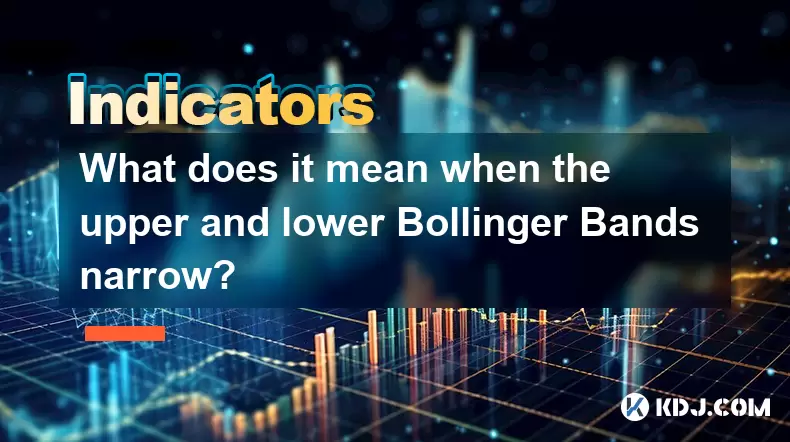
What does it mean when the upper and lower Bollinger Bands narrow?
Aug 09,2025 at 03:00pm
Understanding Bollinger Bands in Cryptocurrency TradingBollinger Bands are a widely used technical analysis tool in the cryptocurrency market, develop...
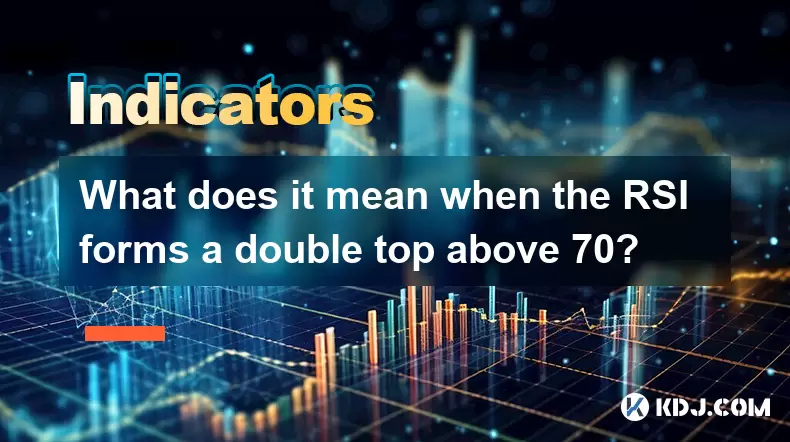
What does it mean when the RSI forms a double top above 70?
Aug 09,2025 at 05:50pm
Understanding the RSI and Overbought ConditionsThe Relative Strength Index (RSI) is a momentum oscillator that measures the speed and change of price ...
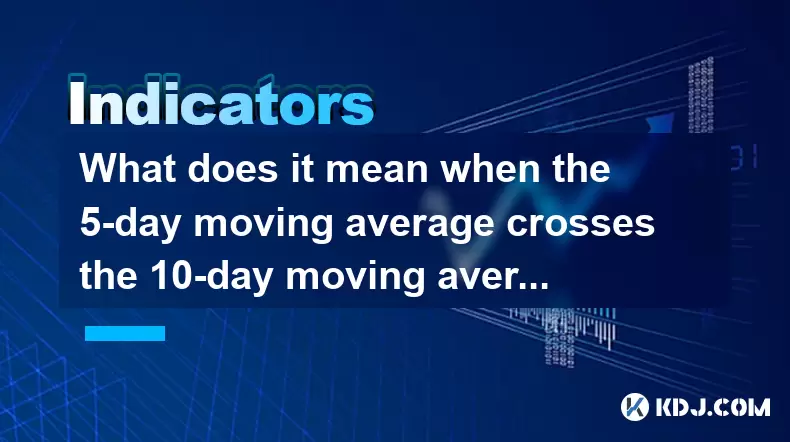
What does it mean when the 5-day moving average crosses the 10-day moving average but the 20-day moving average remains upward?
Aug 09,2025 at 03:35pm
Understanding Moving Averages in Cryptocurrency TradingMoving averages are foundational tools in technical analysis, especially within the cryptocurre...
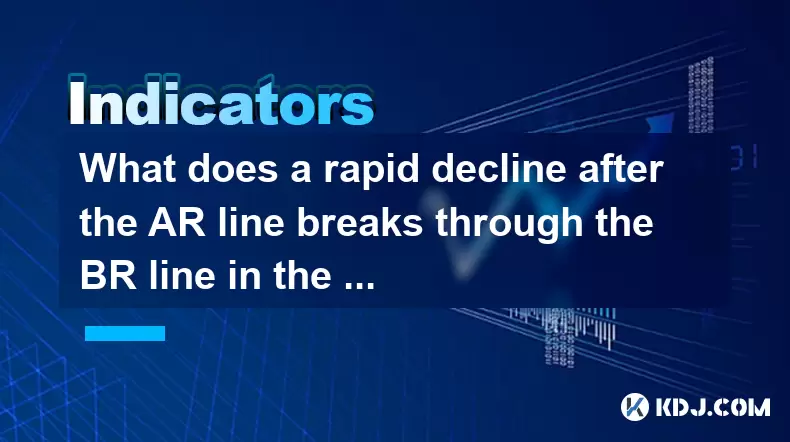
What does a rapid decline after the AR line breaks through the BR line in the ARBR indicator indicate?
Aug 09,2025 at 04:42pm
Understanding the ARBR Indicator ComponentsThe ARBR indicator is a technical analysis tool that combines two oscillators: the AR (Amplitude Ratio) and...

What does it mean when the Triple Moving Average (TRIX) turns downward but the price doesn't fall?
Aug 09,2025 at 12:42pm
Understanding the Triple Moving Average (TRIX) IndicatorThe Triple Moving Average, commonly known as TRIX, is a momentum oscillator designed to filter...

What does it mean when the Williams' oscillator repeatedly hits bottoms but fails to rebound?
Aug 09,2025 at 09:28am
Understanding the Williams %R OscillatorThe Williams %R oscillator, developed by Larry Williams, is a momentum indicator used in technical analysis to...

What does it mean when the upper and lower Bollinger Bands narrow?
Aug 09,2025 at 03:00pm
Understanding Bollinger Bands in Cryptocurrency TradingBollinger Bands are a widely used technical analysis tool in the cryptocurrency market, develop...

What does it mean when the RSI forms a double top above 70?
Aug 09,2025 at 05:50pm
Understanding the RSI and Overbought ConditionsThe Relative Strength Index (RSI) is a momentum oscillator that measures the speed and change of price ...

What does it mean when the 5-day moving average crosses the 10-day moving average but the 20-day moving average remains upward?
Aug 09,2025 at 03:35pm
Understanding Moving Averages in Cryptocurrency TradingMoving averages are foundational tools in technical analysis, especially within the cryptocurre...

What does a rapid decline after the AR line breaks through the BR line in the ARBR indicator indicate?
Aug 09,2025 at 04:42pm
Understanding the ARBR Indicator ComponentsThe ARBR indicator is a technical analysis tool that combines two oscillators: the AR (Amplitude Ratio) and...
See all articles

























































































